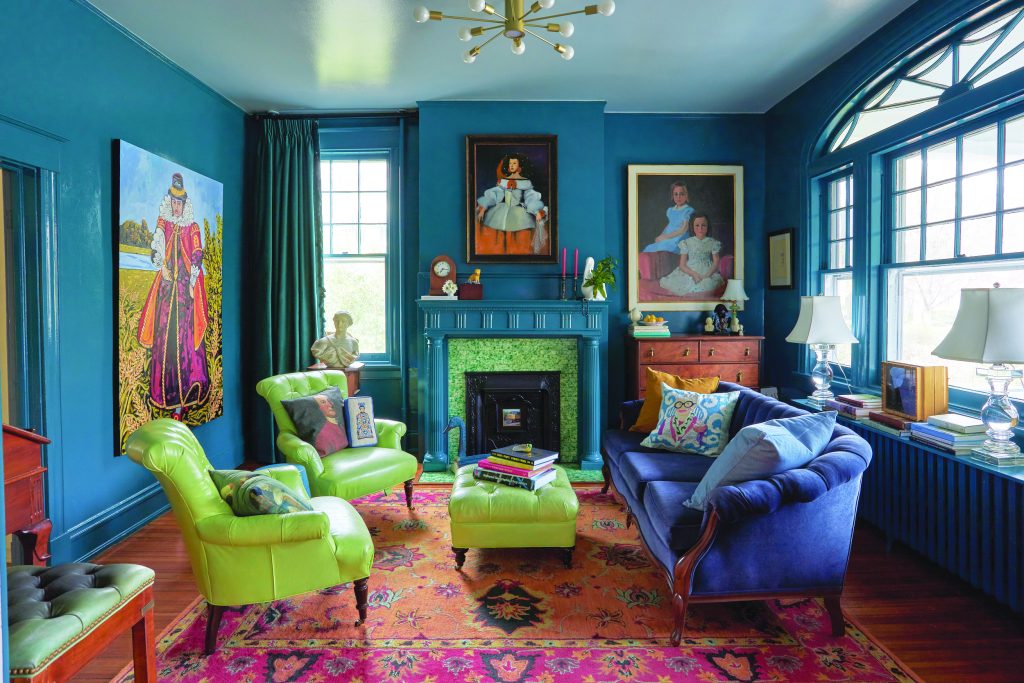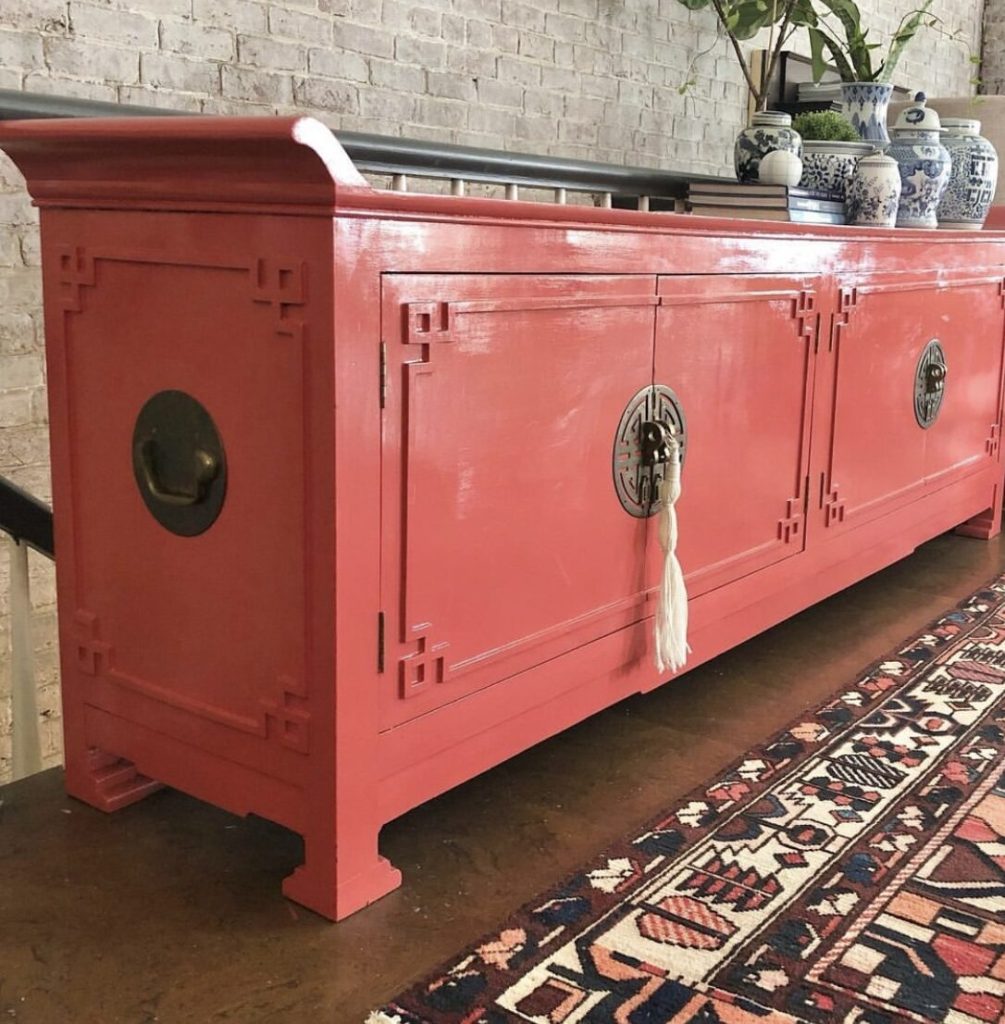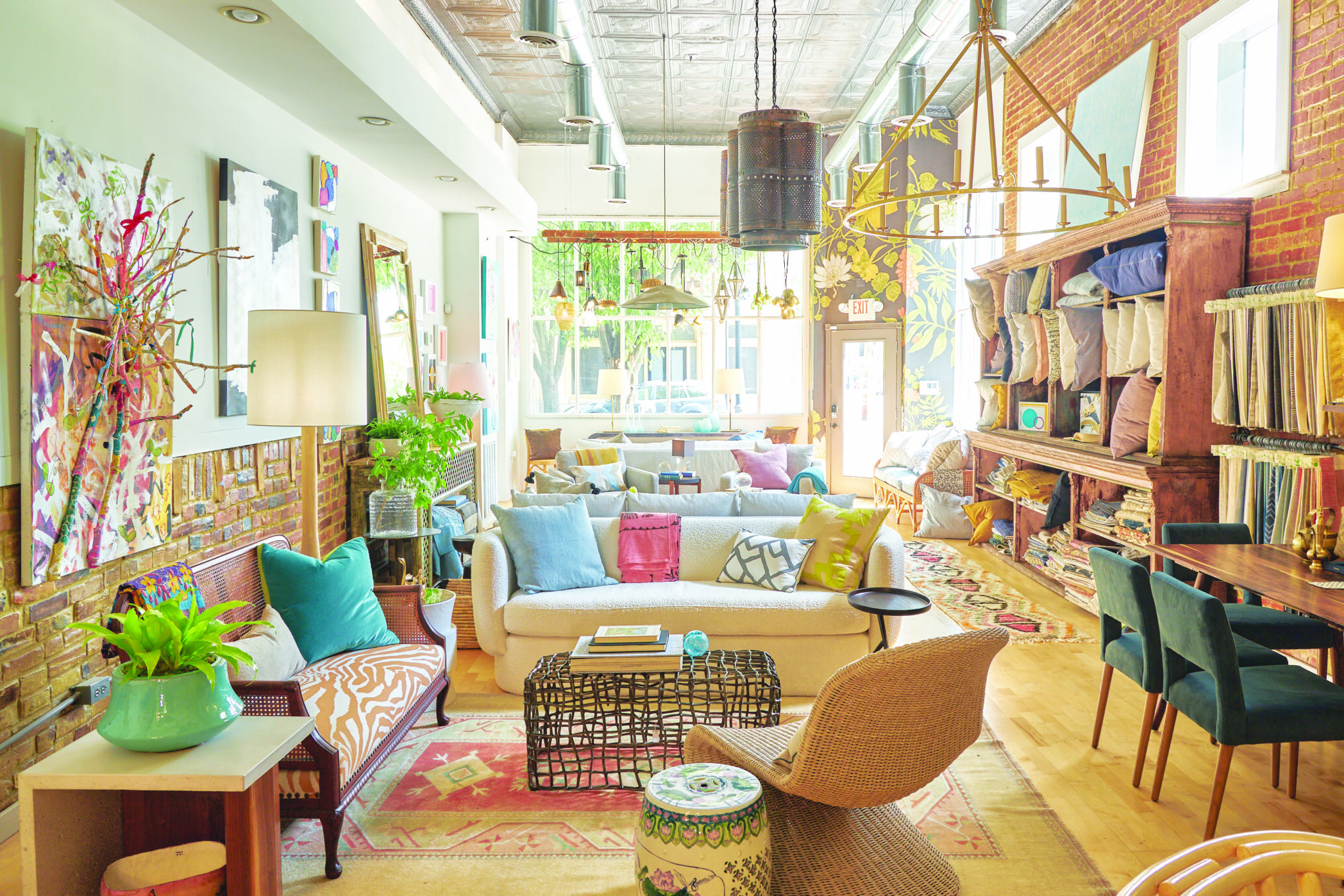We waited for months. Summer turned to Fall. Thanksgiving passed, then Christmas. It was well into 2022 when we finally got the email that my client’s dining room chairs, the final piece of a home redesign that was years in the making, were finally shipping.
At this point, the missing pieces, a set of Layton Chairs with Rattan in Dusk, still have a long way to go. They are coming from Asia, where most high-end furniture is made. They have to make it onto a loading dock and then be put into a shipping container, hopefully without too much delay. It could take weeks to make it across the Pacific. Arriving at the Port of Long Beach, they sit (in an unconditioned crate) until the shorthanded workers can unload them. Then my beautiful chairs sit on a truck, making their way across the country. If, that is, we can find a transportation line with available drivers.

Finally, the moment arrives. Those gorgeous chairs we have been dreaming of for almost a year are carried across the threshold of my client’s home, into the dining room, and around the custom table, where they look even more stunning than I’d imagined. I’m happy, the client is happy, and all is well.
Almost.
Within a month, I get a call that those lovely, expensive, unique chairs that should last many lifetimes are starting to break. The beautifully caned seat of one chair snapped when the family’s 12-year-old girl sat on it—followed by another. And still another.
It turns out that those chairs, while stunning, were fabricated from a non-native species of tree whose wood is not made for our hot, Southeastern climate. Also, they were never intended to sit in unconditioned containers while they made their many-month-long journey to their final resting place. The shrinking and swelling across the miles and locations had weakened and eroded the quality of these pieces before anyone actually sat in them.


I would love to tell you that this story is an anomaly, but I can point to many others (and probably start a support group with my fellow interior designers who have similar battle stories from the past two years).
When the pandemic forced me to close the doors of my interior design studio in early 2020 and send my team to work from home, I panicked. Our commercial and hospitality projects halted, and our residential clients told us to pump the brakes.
Luckily, sooner than I could pop a Xanax or take some deep breaths, the phone was ringing off the hook for residential design services…home offices, new kitchens, whole house renovations, second homes! It was a dream for a boutique design firm like ours to have more business than we could handle. But before long, we realized this dream also had the makings of a nightmare. Many clients were eager to buy beautiful products, but those products were impossible to get.
Anyone brave enough to undertake a renovation project since 2020 is painfully aware of the supply chain challenges brought to us by COVID, labor shortages in shipping and logistics, a foam shortage due to the 2021 deep freeze in Texas, and a war in Ukraine (Did you know that 10 percent of the U.S. lumber supply comes from Russia?), and now volatile gas prices. How many collective hours have been spent on the phone by eager purchasers of furniture, only to learn that their product continues to be delayed or back ordered indefinitely?
I thought much of this could be avoided by sticking with high-end, trusted brands. These trade-only luxury sources were not in demand at the same level as more accessible retail brands, so I thought I was relatively safe. I was able to order my product and get it here, albeit with a more extended timeframe than my clients and I would have liked. But long lead times were only one part of the nightmare.
Experiences like this have me rethinking what sourcing luxury goods for design projects look like. For starters, this is a terrible experience for my clients. But it is also repellent to conscious consumers for whom the materials used for manufacturing and their impact on the environment matter as much as their quality. To say nothing of hidden environmental costs for transporting materials across the globe. And as the pandemic opened many of our eyes to income disparities, issues of equality and inclusion, and other injustices, practices around supplier diversity matter more and more.
Notably, there are design benefits to thinking responsibly about sourcing. I have found a richer well of more unique, better quality and more readily available sources. We have found ourselves sourcing more regional, small, and custom fabricators. I had historically relied on a bevy of artists and makers where I am in Richmond, Virginia, to bring special custom touches to my projects. The unavailability or unreliability of products critical to a project drove me to depend on those trusted partners and encouraged me to explore and discover new ones.

That is why I opened The Flourish Collective, showcasing the products and potential of these local fabricators on the first floor of my design studio. This could be where my clients could come in and create or co-create a bespoke, custom space with anything and everything from lighting to wallpaper to dining room tables. My experiences with my partners in The Flourish Collective, like Umanoff Designs or Alicia Dietz Studios, lead me to similar sources like The Mill Collective, who are curating and showcasing small, domestic fabricators across the country. And an exploratory shopping trip to Charleston landed me at The Fritz Porter Design Factory, where clients can access beautiful and unique goods from boutique textile makers and domestic, customizable furniture purveyors.
The supply chain crisis also made it easier to get my clients on board with repurposing interesting but tired or well-worn pieces. As a designer, I’ve always encouraged my clients to let us incorporate family pieces and meaningful objects into our designs—it imbues a space with story and meaning, elevating any plan to create a more acquired or curated feel. The alternatives to the pieces we wanted and couldn’t get in a timely or guaranteed fashion were already hiding in plain sight in my clients’ homes. Lacquering that ubiquitous brown furniture in an unexpected color and adorning it with updated hardware (the jewelry of case goods) or reupholstering that old Chippendale sofa with a modern fabric not only addressed issues of availability but became the piece de triumph of the design. Reuse—Recycle never looked so good.
Of course, not all my clients have a treasure trove in their attics to pick from. I’ve turned to vintage sources like Chairish or First Dibs when I can’t find that particular item at my favorite local spots like Verve Home Furnishings. Visits to The Scott Antiques Market have helped us layer and complete projects and offerings in our showroom with unique décor and artifacts. We ditched Market in High Point this year in favor of attending The Round Top Antiques Fair in Texas to load up on beautiful, available goods. In the process, I discovered even more small makers and artists offering bespoke and heirloom quality goods.
If I can make one recommendation for when you are dreaming about the next project or purchase for your home, think small and hyper-local (and nothing is more hyper-local than your attic!) It’s a beautiful way to minimize your carbon footprint, support local tradespeople in refinishing and repurposing, support small and regional artists and businesses (including female and minority-owned businesses) and yield a beautiful product in the process.







